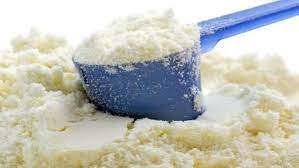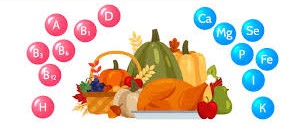Ready to Use Therapeutic Food Machinery (RUTF)
Introduction
Ready-to-use therapeutic food (RUTF) is a type of food designed to provide complete nutrition to individuals suffering from severe acute malnutrition. It is a peanut-based paste that is rich in protein, fat, carbohydrates, vitamins, and minerals. RUTF is designed to be used without any additional preparation, making it an ideal solution for emergency feeding programs and in areas with limited access to clean water and food. RUTF is typically packaged in individual portions, making it easy to transport and distribute to those in need. The use of RUTF has been shown to be effective in treating malnutrition and reducing mortality rates in emergency and humanitarian contexts.





The ingredients used in the formulation of ready-to-use therapeutic food (RUTF) vary depending on the specific product and target population, but typically include :
- Peanuts: The primary source of protein and fat in RUTF, peanuts are also rich in minerals such as magnesium, potassium, and zinc.
- Milk Powder: A source of protein and calcium, milk powder is often added to RUTF to improve its nutritional profile.
- Sugar: A source of energy in the form of carbohydrates, sugar is also used to improve the flavour of RUTF.
- Vegetable Oil: A source of healthy fats, vegetable oil is used to enhance the fat content of RUTF.
- Vitamins and Minerals: Essential vitamins and minerals, such as iron, Vitamin A, and Vitamin C, are added to RUTF to improve its nutritional profile and help address specific nutrient deficiencies.
- Antioxidants: Antioxidants, such as Vitamin E, are added to help preserve the stability and shelf-life of RUTF. Depends on target population.
- Stabilizers: Stabilizers, such as xanthan gum, are used to improve the texture and consistency of RUTF. Depends on target population.





The production of ready-to-use therapeutic food (RUTF) typically involves the following steps:
- Ingredient Selection: The ingredients are carefully selected to meet specific nutritional requirements and to ensure that the RUTF is safe and palatable.
- Mixing: The ingredients are blended in a mixing machine to create a homogeneous paste.
- Cooking: The paste is cooked to sterilize it and to improve its texture and flavour.
- Cooling: The paste is cooled to room temperature to allow for the addition of any remaining ingredients.
- Packaging: The RUTF is packaged in individual portions in airtight containers, such as plastic sachets or metal tins, to ensure its shelf-life and stability.
- Quality Control: Quality control checks are performed at each stage of the production process to ensure that the RUTF meets safety and nutritional standards.
- Distribution: The RUTF is distributed to those in need, typically through humanitarian organizations or government agencies.
- The ideal characteristics of ready-to-use therapeutic food (RUTF) include:
- Nutritional Composition: RUTF should provide all the necessary nutrients, including carbohydrates, proteins, fats, vitamins, and minerals, to meet the daily requirements of malnourished individuals.
- Palatability: RUTF should be appealing and acceptable in taste, smell, and texture to encourage consumption.
- Shelf-Stability: RUTF should have a long shelf-life without refrigeration and should not spoil easily, making it suitable for storage and distribution in remote or emergency settings.
- Convenient: RUTF should be easy to use and consume without the need for additional preparation or cooking, making it ideal for emergency feeding programs and remote areas.
- Safe: RUTF should be free from contaminants and meet international food safety standards.
- Ease of Transport: RUTF should be lightweight and compact, making it easy to transport and distribute to those in need.
- Affordability: RUTF should be affordable for both the producing companies and the beneficiaries, ensuring it is accessible to those in need.

